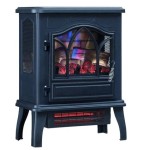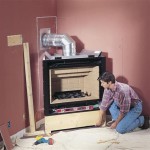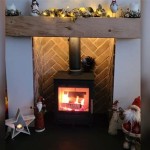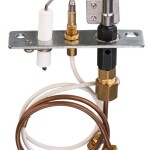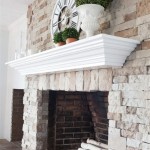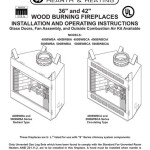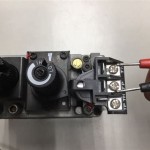Fireplace Brick Repair: Restoring Beauty and Safety
Fireplaces, with their warm glow and comforting ambiance, are cherished features in many homes. However, with time and use, the bricks that make up these structures can suffer from wear and tear. Cracks, crumbling mortar, and chipped edges can detract from the fireplace's aesthetic appeal and, more importantly, pose safety concerns. Timely and proper fireplace brick repair is crucial to maintain the integrity of the structure and ensure its safe and enjoyable use.
The process of fireplace brick repair typically involves several stages, each requiring specific skills and tools. Understanding these stages will help homeowners make informed decisions about DIY repair or hiring a professional. Whether you're planning to tackle the project yourself or seeking expert assistance, this guide provides insights into the key aspects of fireplace brick repair.
Assessing the Damage
The first step in fireplace brick repair is a thorough assessment of the damage. This involves identifying the extent of the problem, the type of damage, and any underlying causes. Here's what to look for:
- Cracks: Hairline cracks are often superficial, but larger cracks, especially those running vertically, could indicate structural issues.
- Crumbling Mortar: Mortar is the material that binds bricks together. Deterioration can lead to loose bricks and increased risk of fire hazards.
- Chipped Edges: While chipped edges might be purely aesthetic, they can also weaken the brick and potentially create a fire hazard.
- Spalling: This refers to the flaking or peeling away of brick surfaces. It can be caused by moisture penetration, freeze-thaw cycles, or even improper installation.
- Efflorescence: This whitish, powdery deposit often found on brick surfaces indicates moisture penetration. It's a sign of a potential deeper problem.
Once the damage is evaluated, it's essential to determine its cause. This helps in choosing the appropriate repair method and prevents future damage. For instance, if cracks are caused by thermal stress due to heat exposure, the solution might involve using a heat-resistant mortar.
Essential Tools and Materials
Before embarking on fireplace brick repair, gather the necessary tools and materials. The specific requirements will depend on the extent and nature of the damage, but generally include the following:
- Chisel and Hammer: These tools are used to remove damaged mortar and loosen loose bricks.
- Mortar: Fireplace mortar needs to be heat-resistant and compatible with the existing mortar.
- Mortar Mixer: This tool helps to combine the mortar ingredients to a consistent consistency.
- Mortar Trowel: Used to apply and shape the mortar mix between bricks.
- Grout Bag: This helps to apply mortar in tight spaces and around corners.
- Level: Ensures the repaired bricks are level and the mortar joints are uniform.
- Protective Gear: Gloves, safety glasses, and a dust mask should be worn during the repair process.
- Cleaning Tools: A brush, sponge, and water are needed to clean up excess mortar and dust.
For more complex repairs, additional tools might be required, such as a brick saw for cutting bricks, a grinder for smoothing surfaces, and a masonry drill for drilling holes for anchors or reinforcement. It's advisable to consult with a professional if you're unsure about the tools and materials needed for specific repairs.
Repairing Common Issues
The actual repair process depends on the type of damage. Here are some common fireplace brick repair techniques:
Mortar Repair
When mortar is damaged, it needs to be removed and replaced with fresh, heat-resistant mortar. The old mortar is carefully chipped away using a chisel and hammer. The exposed brick surfaces are cleaned, ensuring no loose debris remains. The new mortar is mixed according to the manufacturer's instructions, applied with a trowel, and smoothed to create a neat joint. Allow the mortar to cure properly before using the fireplace.
Cracked Bricks
Small cracks can often be repaired using patching compound specifically designed for masonry. Larger cracks, however, may require replacing the entire brick. This involves carefully removing the cracked brick using a chisel and hammer. The surrounding mortar is also removed to ensure a clean surface for the new brick. The replacement brick is carefully positioned, and the gaps are filled with fresh mortar. Make sure to use heat-resistant mortar.
Chipped Edges
Minor chips can usually be repaired using a patching compound or mortar. However, significant chips may require a more elaborate solution, such as using a piece of brick to fill the void and then applying mortar to create a smooth surface.
It's important to remember that only qualified professionals should attempt complex repairs, especially those involving structural issues. Consulting with a certified mason or fireplace specialist ensures the repairs are done correctly and safely.

Easily Solve These Common Chimney Repair Problems Chimneysaver

An Inexperienced Mason Can Cause Chimney Restoration Mistakes

How Can Cold Weather Impact Chimney Repairs Done During Winter

Brick Fire Box Repair

How To Fix Crumbling Chimney Mortar 13 Steps

When Do I Need To Repair My Chimney Dc Area Service

Brick Chimney And Fireplace Repairs Doctor

Fire Brick Chimney Repair Napolis Baun S Sweeping

Chimney Repair Vs Sweep Watertite

Interior And Exterior Problems Your Chimney May Have That Need Fixing
Related Posts

